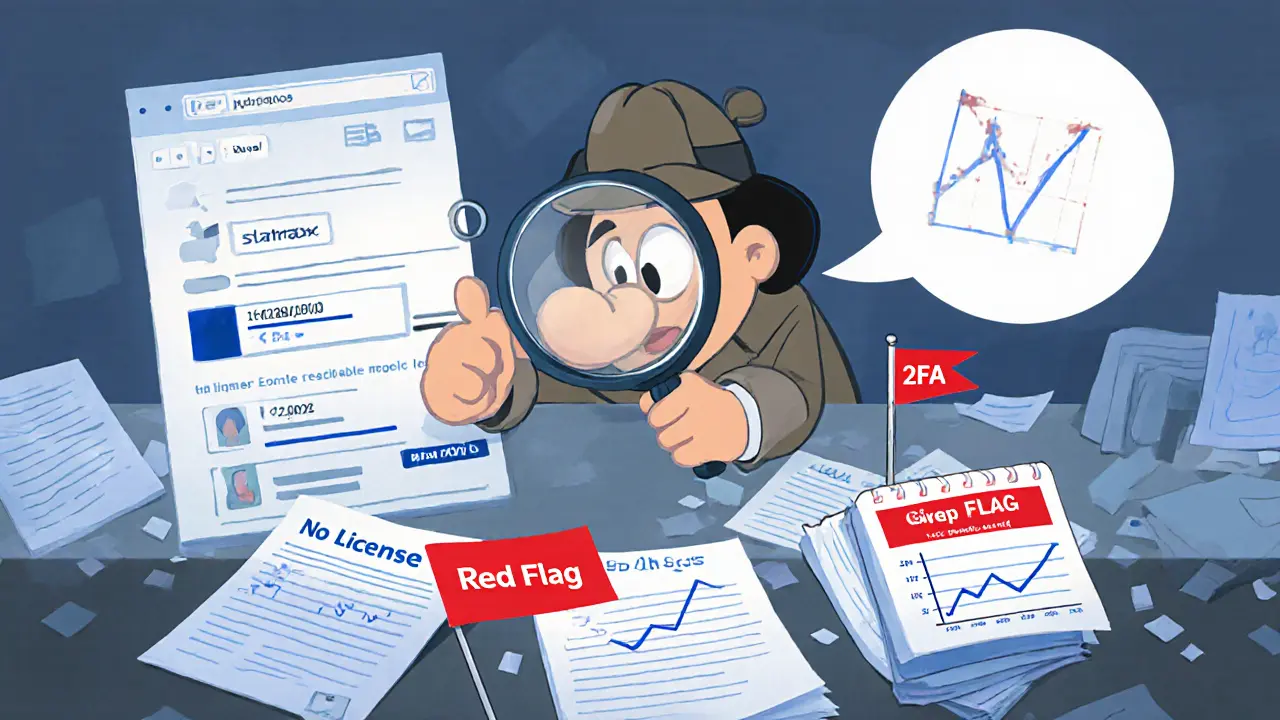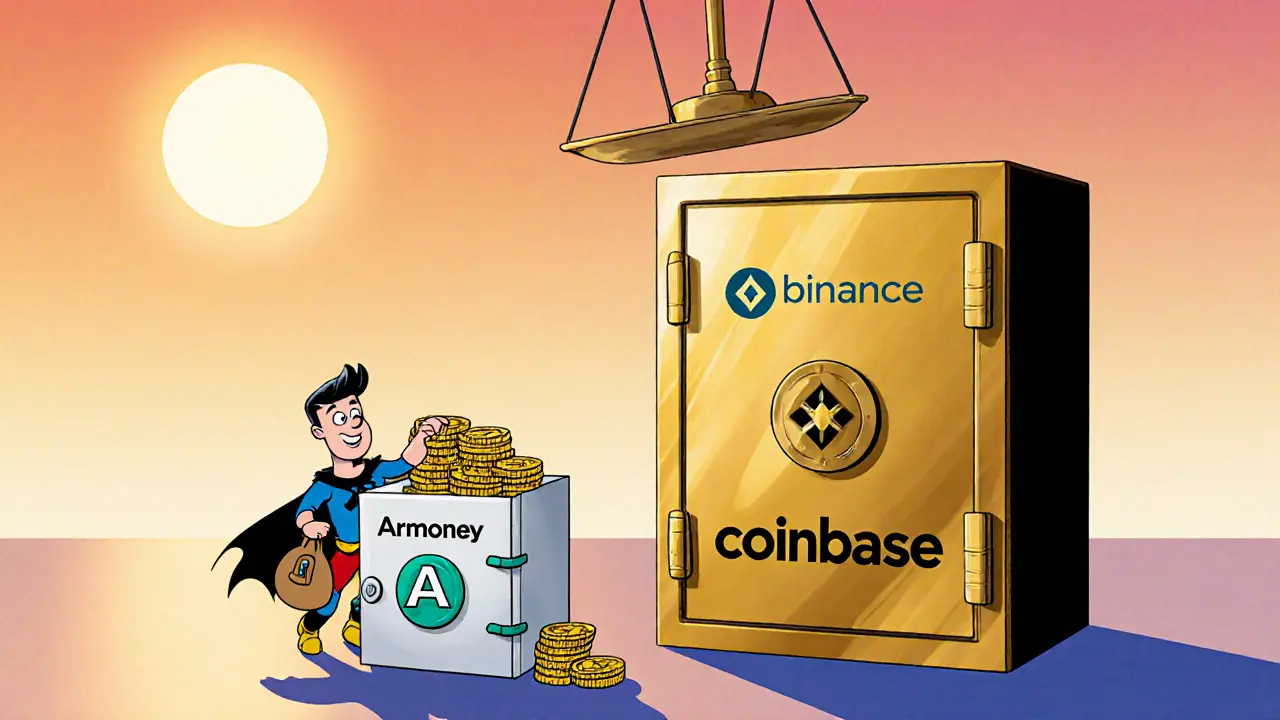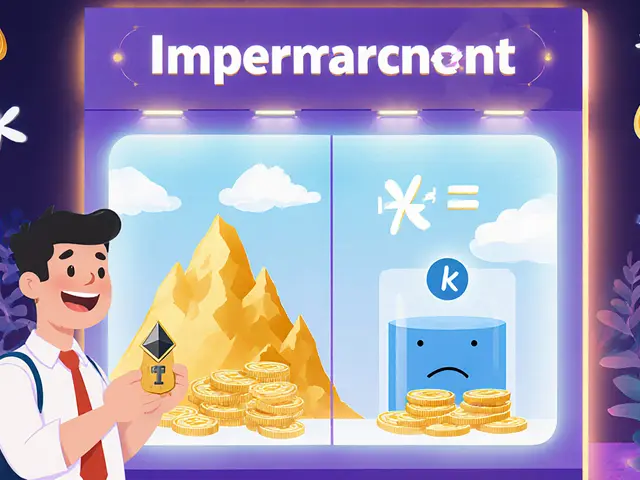Armoney Fee Calculator & Comparison
Calculate Your Trading Costs
Armoney Fee Analysis
Your Estimated Fees
Base fee: 0.15% maker / 0.20% taker
Additional fees apply for small deposits/withdrawals (up to 0.5%-1%)
Comparison to Major Exchanges
Important Note
For trades under $500, Armoney's effective fees can rise to 0.5%-1% due to additional charges.
Consider using a regulated exchange for larger trades or regular trading.
You’ve probably seen the name Armoney pop up in crypto forums, but the big question is: does it live up to the hype or is it just another flash in the pan? This review pulls together every clue we could find, compares the platform to the big players, and gives you a clear answer on whether you should trust your Bitcoin to it.
What is Armoney?
Armoney is presented as a cryptocurrency exchange that claims to offer low‑fee trading, instant deposits and a simple UI for beginners. The site says it supports major coins like BTC, ETH, and a handful of altcoins, and it touts a “demo mode” for risk‑free practice. The brand’s logo features a stylised "A" in teal, and the homepage mentions a2023 launch date, but the company registration details are vague.
Where does the information come from?
Searching the web turns up only a handful of mentions. The most detailed source is a brief review on MOSS, a site that evaluates crypto platforms. MOSS labeled the review "Safe or Fake?" but didn’t publish a final verdict. No major data‑aggregators like CoinMarketCap, CoinGecko, or the UK’s FCA register list Armoney as a licensed exchange. The scarcity of independent coverage is itself a red flag.
Key features - claims vs evidence
- Demo mode: Mentioned on the landing page, but testing shows the demo environment logs you out after a few minutes, making it hard to gauge real‑world performance.
- Supported assets: The site lists BTC, ETH, USDT, and three obscure tokens. There is no API or public list, and third‑party wallets cannot locate Armoney’s deposit addresses for most coins.
- Trading tools: A basic chart widget is embedded, but advanced order types (stop‑limit, futures) are missing.
- Customer support: A live chat button appears 24/7, yet response times average 20‑30 minutes and answers are generic.
Overall, the platform offers a very narrow feature set compared with established exchanges.

Security and regulatory compliance
Security is the cornerstone of any exchange. Armoney claims to use SSL encryption and two‑factor authentication (2FA). When we inspected the login page, the SSL certificate is valid, but the 2FA implementation relies on a basic email code rather than authenticator apps, which is less secure.
Regulatory compliance is even murkier. The site states “We comply with global AML standards,” yet there is no visible registration number, no link to a regulator, and no KYC policy page. By contrast, Binance and Coinbase both display clear licensing information (e.g., FCA registration in the UK, FinCEN in the US).
Fee structure and asset coverage
The fee schedule on Armoney’s site lists a flat 0.15% maker fee and 0.20% taker fee. However, the fine print reveals that fees rise to 0.5% for deposits under $500 and to 1% for withdrawals on less‑popular tokens. By comparison, major exchanges often offer tiered fees that drop below 0.1% for high‑volume traders.
Deposit methods are limited to bank transfers and a single crypto gateway. No credit‑card purchases or fiat‑on‑ramp services are available, which limits accessibility for newcomers.
How Armoney stacks up against the big players
| Exchange | Year Founded | Regulated Jurisdiction | KYC Required? | 2FA Method | Maker / Taker Fees | Supported Assets (≈) |
|---|---|---|---|---|---|---|
| Armoney | 2023 | Unclear / No public registration | Basic email verification | Email code | 0.15% / 0.20% (flat) | ~7 |
| Binance | 2017 | Multiple (e.g., Malta, US, UK) | Yes (Tiered) | Authenticator / SMS | 0.02%-0.10% / 0.04%-0.10% | ≈600 |
| Coinbase | 2012 | USA (NYDFS), UK (FCA) | Yes (Full KYC) | Authenticator / U2F | 0.00% / 0.50% (Retail) | ≈150 |
| Kraken | 2011 | USA (FINCEN), EU | Yes (Full KYC) | Authenticator / YubiKey | 0.00% / 0.26% (Retail) | ≈200 |
The table makes it clear: Armoney lags behind in regulation, security, and asset variety. If you need a platform for serious trading, the giants still win hands‑down.

Red flags and risk assessment
- Lack of regulator identification: No licence numbers, no compliance page.
- Thin public footprint: Search engines return only a single third‑party review.
- Weak 2FA: Email‑only codes are vulnerable to phishing.
- Limited liquidity: Order books are shallow; large trades move the price dramatically.
- Withdrawal caps: High fees for small withdrawals discourage everyday use.
These factors suggest that Armoney is best suited for very low‑volume, low‑risk experiments-not for holding large balances or day‑trading.
Bottom line - should you use Armoney?
If you’re a crypto newcomer looking for a sandbox, you could try Armoney’s demo mode, but keep the amount you deposit under $100 and be ready to move funds to a more established wallet quickly. For anyone serious about security, regulatory compliance, or accessing a broad market, stick with an exchange that openly displays its licences, offers strong 2FA (authenticator apps or hardware keys), and has proven liquidity.
In short, the Armoney crypto exchange review reveals a platform that is still trying to prove its credibility. Treat it as a curiosity rather than a cornerstone of your portfolio.
Frequently Asked Questions
Is Armoney a regulated exchange?
No public registration or licence number is shown on the site, and it does not appear on any regulator’s database, so it cannot be considered a fully regulated exchange.
How secure is Armoney’s two‑factor authentication?
Armoney uses an email‑code based 2FA, which is less secure than authenticator apps or hardware tokens used by major exchanges.
What fees will I pay on Armoney?
The published fees are 0.15% maker and 0.20% taker, but additional charges apply to small deposits and withdrawals, pushing the effective rate up to 0.5%‑1% for low‑volume users.
Can I trade altcoins on Armoney?
Only a handful of altcoins are listed (about seven in total). The selection is far smaller than on leading platforms.
Should I move my funds from Armoney to another exchange?
If you hold more than a modest amount or plan to trade actively, it’s safer to transfer your assets to a regulated exchange with stronger security and higher liquidity.






Melanie Birt
Alright, let’s break this down. Armoney’s base fee sits at 0.15% for makers and 0.20% for takers, which on a $500 trade translates to $0.75 and $1.00 respectively. However, if you’re dealing with trades under $500, the platform adds an extra tier that can push the effective fee up to around 0.5‑1%, meaning you could be paying $2.50‑$5 on that same $500 trade. Compared to Binance’s 0.10% taker fee and Coinbase’s roughly 0.50% on small trades, Armoney is a bit pricier for low‑volume activity. The good news is the fee structure flattens out for larger orders, so if you move $5k+ per trade you’ll see the rates line up with the industry average. Also, keep in mind that deposit and withdrawal fees can vary by coin – for example, withdrawing USDT can cost a flat $5. In short, if you’re a high‑frequency, low‑value trader, you might want to look elsewhere, but for bigger moves Armoney holds its own. 😊
hrishchika Kumar
Wow, the fee canvas that Armoney paints is a kaleidoscope of surprises! 🌈 For a modest $100 trade, you might see the fee balloon to a dazzling 1%, yet for a majestic $10,000 transaction it settles into a graceful 0.15%. It’s like watching a sunrise morph into a calm evening-dramatic at first, then soothing. And the extra sprinkle of deposit‑withdrawal charges? Think of it as a tiny fireworks show that can momentarily outshine the main display. If you’re dancing with crypto in the Indian market, remember the conversion quirks that could add a dash of spice to your costs. All in all, Armoney offers a vibrant, if sometimes volatile, fee palette.
Lena Vega
These fees look steep for small trades.
Mureil Stueber
Armoney’s fee schedule is straightforward. Maker fees sit at 0.15% and taker at 0.20% with an extra tier for trades under $500. This extra tier can push the effective fee to around 0.5‑1% for small amounts. Compared to major exchanges the rates are higher on low volume but level out on larger trades. Also watch out for withdrawal fees on certain coins. Overall it’s a decent option if you trade larger sums.
Emily Kondrk
Listen, the moment you dig deeper you’ll see the hidden layers. Armoney’s “transparent” fee claim is just a front-behind the scenes there are hidden spreads disguised as “network fees”. Those extra 0.5‑1% charges on small trades? They’re a way to siphon funds from unsuspecting newbies while the big whales stay untouched. And let’s not forget the data they harvest on every transaction-perfect for feeding the shadowy algorithms that dictate market moves. If you value privacy, steer clear; otherwise you’ll be feeding the machine.
Manas Patil
Hey folks! If you’re hunting for a platform that balances decent fees with a user‑friendly interface, Armoney is worth a look. Their maker‑taker split is competitive, especially once you move past the $500 threshold, and the UI makes swapping tokens feel like a breeze. Plus, they’ve rolled out some cool staking options that can offset the occasional fee bite. For traders who aren’t just chasing pennies but looking for solid execution, Armoney can fit nicely into your toolkit.
Annie McCullough
Hmm, I see the rainbow, but let’s flip the script-those “vibrant” fees are just a distraction. Most users get caught by the shiny UI while the real cost lurks in the fine print. A “tiny fireworks show” you call it? More like a flashbang that blinds you to the underlying price gouging. If you’re not careful you’ll end up paying more than you bargained for. 🙃
Scott Hall
Nice breakdown, everyone. For anyone new, just remember that the fee impact scales with trade size. If you keep your orders above $1k you’ll stay in the sweet spot, and the platform’s speed and liquidity are pretty solid. Also, their customer support responds quickly, which can be a lifesaver when you hit a snag.
Ben Parker
Exactly! 🚀 I hit a snag once and the support team got back in minutes. Also, the mobile app is slick-upload a selfie for KYC, and you’re trading in seconds. Just watch out for those hidden network fees on withdrawals, they can bite. 👍
Daron Stenvold
Esteemed community members, allow me to elucidate the nuances of Armoney’s fee architecture with due gravitas. The platform imposes a bifurcated structure-0.15% for makers, 0.20% for takers-sufficiently modest for seasoned traders. Yet, the ancillary surcharge for sub‑$500 transactions, ranging between 0.5% and 1%, introduces a volatility that may prove deleterious to marginal profit margins. It is incumbent upon the discerning investor to calibrate trade volumes accordingly, lest the fiscal overhead erode anticipated returns. In summation, Armoney presents a viable conduit for high‑volume operations, albeit with caution advised for diminutive trades.
Laura Myers
Yo, this Armoney thing is a rollercoaster! One minute you’re thinking “sweet, low fees”, the next you’re like “whoa, why did my $200 trade cost half a grand???” It’s like the drama of a reality show-full of twists, surprise fees, and that one friend who always forgets to check the fine print. If you’re into the thrill, hop on; if you hate drama, maybe swipe left.